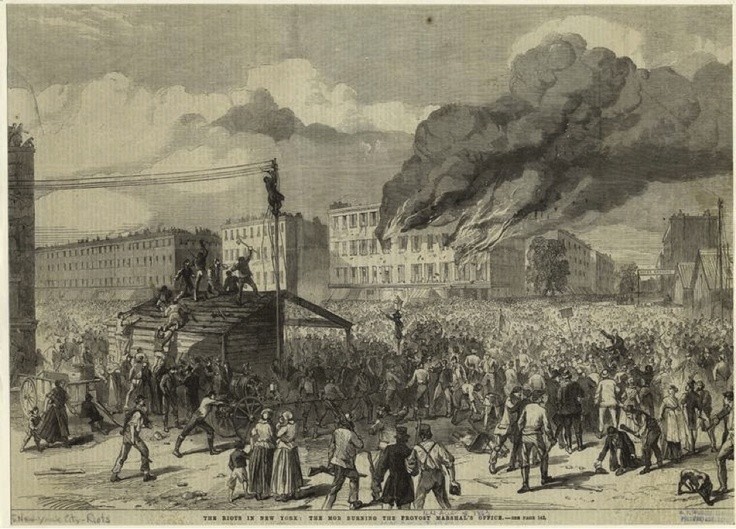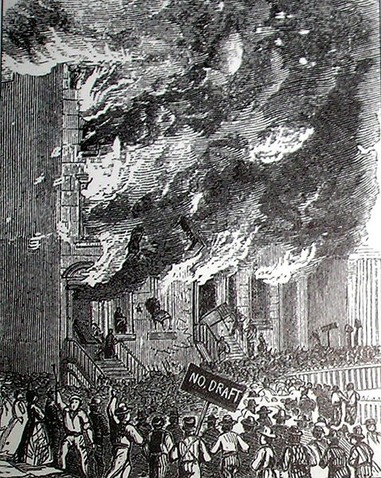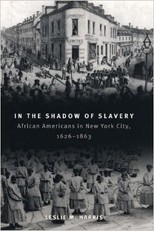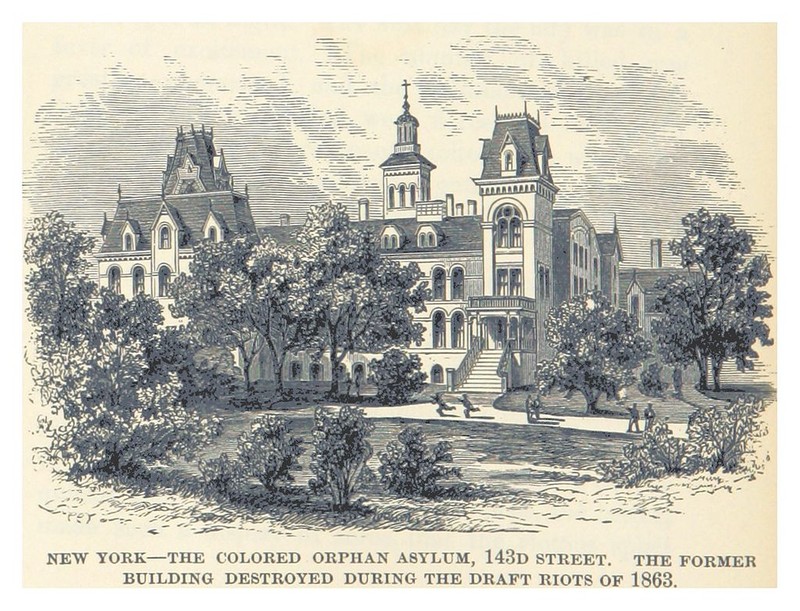New York City Draft Riot, July 1863
Introduction
Text-to-speech Audio
Images
At this location on July 13, 1863, a mob attacked and destroyed the Colored Orphan Asylum.Due to the heroism of staff, city workers, and even some members of the mob itself, the children were able to escape the blaze.

This illustration shows a building on Lexington Avenue being consumed by flames.

Leslie M. Harris, In the Shadow of Slavery: African Americans in New York City, 1626-1863

After the riots, many African Americans moved to other areas of the city and the orphanage was rebuilt at 143rd street in 1868.

Backstory and Context
Text-to-speech Audio
The Enrollment Act was enacted March 3, 1863. The act empowered government officials to draft men for service and called for the addition of 300,000 soldiers for the Union Army. However, the law included several exemptions to the draft, such as the ability to hire a substitute or pay a commutation fee. These provisions raised money for the Union Army but also allowed wealthy men to avoid military service. The rioters protested this and other aspects of the draft law, but their anger was specifically directed against African-American civilians.
Protests against the draft and responses to the belief that white men were dying in order to benefit African Americans escalated throughout the spring and summer. Between July 13 and July 16, 1863, protests turned extremely violent. Forcing men into the military through the draft, while allowing more wealthy men to pay a commutation fee or hire a substitute, angered many of New York’s immigrant laborers. New York’s Black community became a scapegoat and an easy target. The rioters caused an estimated 119 deaths and $1.5 million in damages. The riots were so severe that the War Department redeployed the Army of the Potomac from the battle against the Confederacy to the streets of New York to restore order. In the aftermath, many African Americans abandoned this part of the city.
Sources
"New York City Draft Riots. Civil War Home." Accessed Web, 5/12/17. http://www.civilwarhome.com/draftriots.htm.
